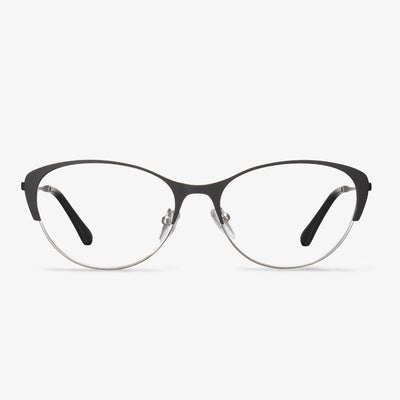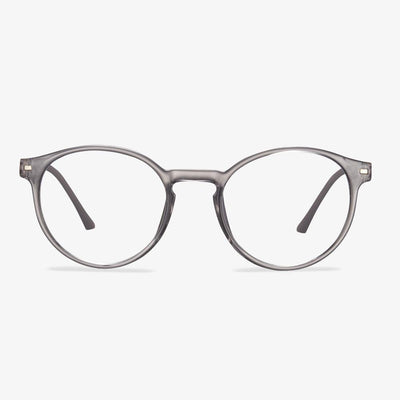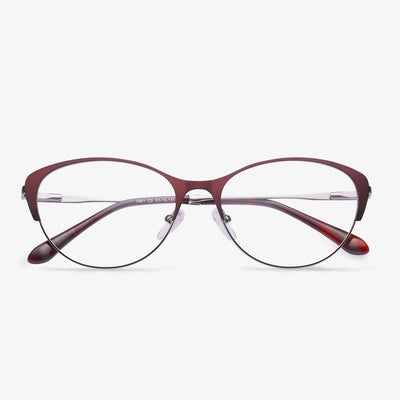SAFE HANDLER Duarte Premium Over The Glass Safety Glasses
Impact-resistant polycarbonate lenses are used. It fits most head sizes comfortably without slipping while providing comprehensive protection against industrial hazards. These glasses have shatterproof and high-impact lenses. The ultralight design encourages less slippage and reduces harm. Fully covered UV400 scratch-proof and fog-proof coating, providing the best protection. They are suitable for different environments, and weather conditions, including automobiles, construction, painting, laboratory work, etc.
How Do Adjustable Glasses Work?
Adjustable glasses are featured with the fluid-filled lens technology that lets you adjust the power of the lens based on the correction level you need. You can twist the dial until you can see clearly. So, adjustable glasses are also called dial vision glasses.
Each of the lenses on adjustable glasses has a membrane that moves outward or inward based on how much fluid the lens contains. The liquid comes from a small syringe connected to each arm of the glasses. You move the dial to pump fluid in or out of the lens. As fluid enters the lens, the lens’s power increases. This can correct farsightedness. Pumping the fluid out can correct nearsightedness.
The principle of adjustable glasses is the same as vision ability. You change the physical shape of the lens just as the physical shape of the eyeball so as to correct your vision.
Can night driving glasses prevent blue light?
Night driving glasses are called night vision goggles. Some night-driving glasses have anti-reflective coatings. Night driving glasses reduce glare by scattering and filtering blue light. Blue light is the shortest wavelength in the spectrum and is possible to cause glare when it enters the eye. The night driving glasses, available in colors from yellow to amber, filter out a lot of glare, and other light, and then make it difficult to see in dark conditions. But tests and studies have shown that night driving glasses don't improve night vision or help drivers see pedestrians faster than they won’t wear them.
The characteristics of metal material
The material of metal glasses frame chooses some kind of metal material or alloy to make mostly. Most of the copper alloys are treated as the base material and then have surface treatment processing. Then there is the recent rise of pure titanium frames and those made of memory alloy. Metal frames are usually equipped with nose pads, which are movable to accommodate a variety of nasal shapes. The end of the temple is often covered with a plastic cover, not only beautiful but also to protect the temple and skin.
Cyxus Blue-Light-Blocking Glasses for Kids
So the price you pay for a pair of blue light blocking lenses depends more on the quality and style of the frame than on the effectiveness of the lens. The glasses, which come in a black and pink frame, come with a waterproof case in the shape of a rabbit, a cleaning cloth, and a blue-light flashlight to test the lenses. The brand's boxes come in very cute kids' colors and shape to make it fun. (In addition to the all-black version, there are blue, green, and red versions.)
Are yellow lenses good for night driving?
Yellow lenses are very effective even in low light conditions. They enhance contrast while you're driving. In other words, they broaden your horizons and allow you to see more cars, people, and objects on the road. Especially when you're driving at high speeds on dark roads, this widened, enhanced view can help you see more clearly. The transparent driver's glasses effect is not good. Headlight glare can be understood as dazzling light. The lens should be looked for from the angle of the stain. But the color should not be too dark to ensure safe driving at night. It is better to polarize the light. It can greatly improve the anti-glare effect.
Who are suitable for progressive lenses?
A progressive piece is suitable for most old people to wear. The proper person is the one who has the visual needs of the long, medium and short distance cares about beauty, and is willing to accept new things. In order to avoid binocular vertical prism differences, for the wearer whose equivalent spherical lens with anisometropia is more than 2D, especially if the difference in refractive power of the vertical meridian is more than 2D, it should be checked with caution. Opticians whose vision needs do not match the progressive lens design, like dentists, often experience blurred vision when working with the far side of the lens to look closer.


















































